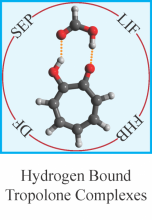Current Projects
Summary
Our work focuses on the fundamental properties of molecular systems as revealed through detailed interpretation of spectroscopic measurements and related optical phenomena. Of particular interest are the structure and dynamics of polyatomic reagents that contain chemically-significant quantities of internal (rovibronic) energy. Aside from their practical importance in various atmospheric, combustion, and plasma processes, these transitory species provide a unique opportunity to assess present-day understanding of molecules and their interactions.
Through use of novel multiple-resonance laser techniques, target molecules are prepared selectively in specific rotation-vibration levels of either ground or excited electronic states. Spectroscopic interrogation of these species provides detailed information on molecular topography, chemical bonding, and intramolecular dynamics in regimes of excitation akin to those encountered during a chemical reaction. Starting with theoretically tractable triatomic and tetratomic systems, these studies explore the breakdown of small-amplitude, adiabatic approximations (e.g., normal modes and rovibronic separability) utilized for the canonical description of molecules near the bottom of their potential wells. Far from being spectroscopic curiosities, such effects provide the impetus for transforming polyatomic systems from a paradigm of well-organized harmonic motion to one characterized by chaotic behavior. Extension of this work to larger molecules has addressed key aspects of chemical and biological processes, including the interrelated phenomena of hydrogen-bonding and proton-transfer. One of the main objectives for these efforts is the identification of important barriers and bottlenecks in multidimensional potential energy hypersurfaces that ultimately govern the evolution of reactants into products. Aside from elucidating the nature of intramolecular and intermolecular forces that mediate the subtle interplay between energy and matter taking place during chemical transformations, the information gleaned from these studies serves to motivate new methods for interrogating molecules and controlling their behavior. For example, our investigations have led to the development of ultrasensitive polarimetric schemes that have enabled the first quantitative measurements of dispersive (non-resonant) optical activity in isolated (solvent-free) chiral species.



